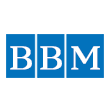Indicators
A sample of the data collected
The name of the bank business model observed. We distinguish in: 1) Focused retail, 2) Diversified retail (type 1), 3) Diversified retail (type 2), 4) Wholesale, 5) Investment
The progressive number is useful to identify the bank becasue each bank has its number.
It is a cost efficiency ratio that measures the bank’s efficiency. Higher the ratio, lower the cost efficiency
The country in which the bank operates
It is the customer loans growth year on year expressed in percentage.
The shareholder equity ratio shows how much of the bank’s assets are funded by equity shares. The lower the ratio, the more debt a bank has adopted to pay for its assets. Moreover it informs on how much shareholders would receive in the case of a bank-wide liquidation.
The Minimum Requirement for Own Funds and Eligible Liabilities (MREL)[1]. It is a requirement introduced by the Bank Recovery and Resolution Directive (BRRD), of which the objective is to increase the presence of instruments with a high loss absorbing capacity in the liabilities of banks. The increase of the loss absorbing capacity should allow failing banks to be liquidated without jeopardizing financial stability and without the need to use public funds.
Introduced by the Basel Committee on Banking Supervision in 2010, the NSFR aims to restrict banks from having an excessive reliance on short-term funding, in an attempt to promote more balanced mid-to long-term financial resources, in order to support the assets through stable funding sources. More specifically, the measure requires the available stable funding to exceed the required stable funding.
This is the number of migrations observed in the year on the total number of observations of the same years
Return on assets (ROA) is an indicator of how profitable a bank is relative to its total assets. ROA gives a manager, investor, or analyst an idea as to how efficient a bank’s management is at using its assets to generate earnings.
It is a profitability ratio that caluclates how many euro of profit a bank generates with each euro of shareholders’ equity.
The weight of RWAs on unweighted assets (RWA density) is also an important indicator of the efficiency with which credit institutions face the new recapitalization requests coming from the new regulation
SRISK measures the capital shortfall of a firm conditional on a severe market decline, and is a function of its size, leverage and risk. SRISK is an estimate of the amount of capital that a financial institution would need to raise in order to function normally if we have another financial crisis
The tier 1 capital ratio is the ratio of a bank’s core tier 1 capital — that is its equity capital and disclosed reserves—to its total risk-weighted assets. It is a key measure of a bank’s financial strength that has been adopted as part of the Basel III Accord on bank regulation.
The year in which the bank is observed
The Z-score, defined as the number of standard deviations by which bank returns have to fall to exhaust bank equity, is considered a proxy for bank soundness

